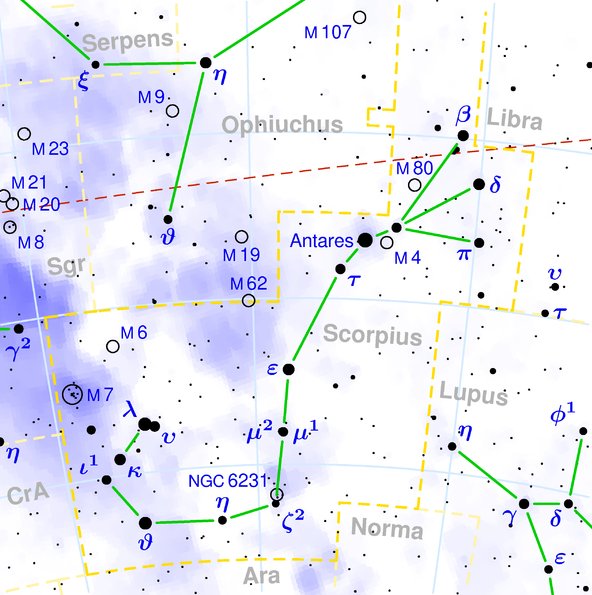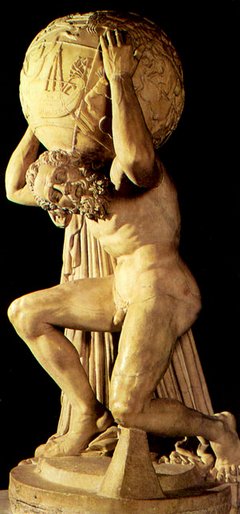In order to unlock the glyph text I had to use some sort of 'key' and after much searching I found a pair of glyphs which evidently coincided with the days when α Tauri respectively α Scorpii rose together with the Sun, and this was my key: At the time of the rongorongo writers these red (great) stars rose heliacally in May 28 respectively in November 25. May 28 was day 148 counted from January 1 and November 25 was day 329. From the time when Aldebaran (α Tauri) rose heliacally to the time when Antares (α Scorpii) rose with the Sun there were 329 - 148 = 181 days and this was also the glyph distance from Ga1-4 to Ga7-16:
It could have been only a coincidence. However, later investigations proved my idea made sense.
Looking up into the night sky the outline of the imaginary lines describing the Scorpion has its tail at left, but in Ga7-16 its tail is at right. The head (beginning) of the Scorpion is rising earlier than its tail (end), but the maps of our astronomers has time running from right to left instead of from left to right - which is our convention for reading texts. The glyph text is running from left to right and therefore its time is running from left to right, precisely as when we are reading our own texts. In other words, in order to understand a glyph text we have to assume a point of view outside the celestial globe, looking down on the constellations instead of looking up from the inside of our imaginary sphere.
|


